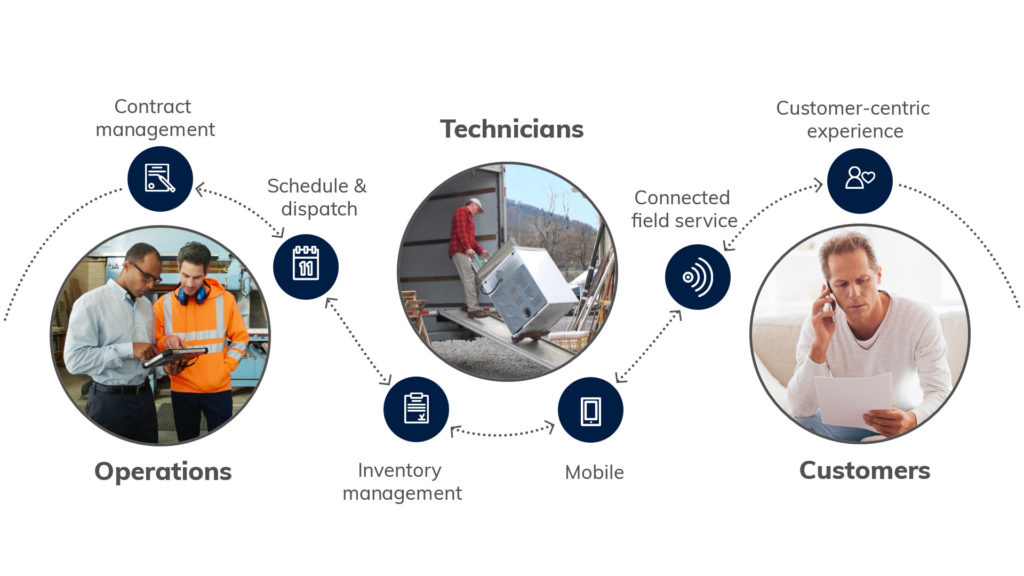The Dynamics 365 Field Service business application helps organizations deliver onsite service to customer locations. The application combines workflow automation, scheduling algorithms, and mobility to set up mobile workers for success when they're onsite with customers fixing issues.

The Field Service application enables you to:
- Improve first-time fix rate
- Complete more service calls per technician per week
- Manage follow-up work and take advantage of upsell and cross sell opportunities
- Reduce travel time, mileage, and vehicle wear and tear
- Organize and track resolution of customer issues
- Communicate an accurate arrival time to customers
- Provide accurate account and equipment history to the field technician
- Keep customers updated with the status of their service call and when it's resolved
- Schedule onsite visits when it's convenient for the customer
- Avoid equipment downtime through preventative maintenance
Here are some examples of the types of organizations that use the application to manage their field service:
- Manufacturing - A medical device manufacturer sells machines to hospitals and clinics, and uses the application to manage maintenance services over the lifetime of the machines.
- Utilities - A fiber optic cable utility company uses the application to respond to outages by dispatching technicians to problem areas.
- Health care - An in-home health care service provider uses the application to schedule and dispatch healthcare workers to administer medicine and other care to multiple patients.
- Equipment maintenance - A facilities manager uses the application to deliver maintenance and repair services for heating and cooling equipment.
Key capabilities
Field service capabilities include:
- Work orders to define the service work needed primarily (but not exclusively) at customer locations.
- Scheduling and dispatch tools to manage resources and equipment needed for customer service, visualize onsite appointments, and optimize service schedules with efficient routing and resource skill matching.
- Communication tools to enhance collaboration between customer service agents, dispatchers, field technicians, customers, and other stakeholders.
- An easy-to-use mobile application that guides technicians through schedule changes and service work.
- Asset management capabilities to keep track of customer equipment and service history.
- Preventive maintenance by automatically generating recurring maintenance appointments for equipment.
- Inventory, purchasing, and returns capabilities to manage truck stock, purchase order requests and fulfillment, and product returns.
- Billing capabilities to generate invoices based on products and services delivered to customers.
- Time tracking to help you track how resources are spending their time, whether they're traveling, on break, or working.
- Analytics for reporting on key performance indicators for managing work orders, scheduling activities, and interacting with customers.
Source: Microsoft